2015 Yamaha WR250F
A Serious Blue Trail Bike
MSRP: $7990.00
- Yamaha has a potent package that can serve everyone from novice trail riders to serious single-track racers.
- A tight quality package that has a strong history of durability behind it.
- Light and agile while still being stable, a great transition from a motocross chassis.
- GYTR Competition Kit will turn the WR into a racer and allow the use of the Power Tuner.
- The bike comes very limited to meet sound and emission standards.
- If you ride the YZ250FX the WR feels very lackluster in the engine department.
Introduction
- Yamaha's all-new serious trail bike based off the YZ250F.
Some might feel Yamaha has been on cruise control with its WR off-road offerings lately. The WR250F has not changed for a while, really since its switch to an aluminum frame in 2007. The WR450F received a major makeover just a few years ago but that bike was met with lackluster reviews. Yet in the background, since the initial revamping of the motocross-only YZ250F, Yamaha has been planning this new WR250F. Using all the latest motocross technology and then adapting that over to a legal and trail worthy was the plan from day one. And since there would also be a competition off-road bike in the YZ250FX, it gave the opportunity for the WR to be a serious trail bike without having to worry about doing extra duty. As new and fresh as the WR seems, Yamaha has had a history of taking the motocross bike and within a year having a WR offering, only the latest 450cc bikes break this cycle.
Changes
- Motor is nearly identical to the YZ250 in the power producing parts.
- Off-road necessities are included and integrated nicely.
- The six-speed transmission is new to the WR.
Being all-new, there are a few "changes" to discuss. From a performance look there are quite a few very specific similarities with the YZ250F and then some very important and necessary differences. The architecture of the bike is pure YZ including the rearward exiting exhaust, rearward slanted engine, the air-box atop the engine (typically where the gas tank would be) and the frame’s geometry and the components attached to it. Thought the frame does differ in some mounting tabs, for a skid plate and some of the electronics, the bigger changes are in small details like the thinner engine mounts to allow more flex. Suspension components are the same save for the lighter spring rates and altered internal valving set up specifically for off-road riding. Additionally the WR uses a different lower lug on the fork leg to allow the use of the odometer sensor and the fork guards to route the cables properly.
The engine, from the power producing side of things is identical to the YZ250 from the forward mounted 44mm throttle body to the first two sections of exhaust header. The cam timing and profile is claimed to be identical with the only difference being an altered decompression ramp on the exhaust cam to accompany the electric starting. The changes in the transmission are substantial with a six-speed wide-ratio offering where first gear is lower than the YZs and sixth a jump over the YZs fifth. The previous WR only had five-speeds as well. Of course the engine has electric-starting with a kick-start backup so the charging system has to be boosted to a 160-watt alternator with added flywheel mass as well. Changes to the clutch include a different pull ratio, lighter springs, different oiling holes and a different friction plates.
Off-road features include a 18-inch rear wheel, a kickstand, head and tail lights that are now controlled by the ECU and do not have an “on/off” switch. There is a multi-function odometer and warning lights for low fuel and ECU faults. The ECU on the WR is locked for emissions compliance and the muffler is a very quiet, non-rebuildable chambered design. The WR comes standard with a plastic skid plate and a cooling fan on the radiator that kicks in automatically at about 200-degrees. The under-seat fuel tank is different from the YZ in that it is permeated to prevent vapors from passing through the plastic and it also has a low-fuel sensor inside it’s 2-gallon cavern.
Power
- We tested our WR with the noise suppressor in the intake removes as well as the smallest reducer in the muffler.
- The power is very linear and smooth and really comes alive on the top end.
- Do not let the lack of noise fool you about the torque in the bottom and mid-range.
- The GYTR Competition kit will turn the WR into a racer.
Being an off-road legal 250cc and being exciting or impressive is a tough call. But the WR does and outstanding job. You just have to give it a chance to prove itself to you. We rode our WR with the throttle stop removed and the smallest restrictor inside the muffler removed as well as a sound damping snorkel in the intake tract below the air filter removed. This way the bike was still green-sticker sound and spark arrestor compliant and very much one of the quietest bikes we’ve ridden. So quiet in fact that to the rider most of the noise comes out from under the airbox cover when really on the throttle.
The WR fires up easily and the cold-start is easily accessed if needed. The throttle response is snappy and instantaneous and does not feel like there is a heavy flywheel or crank at all. The power is deceiving in that the bike can stall without any throttle quite easily but if the throttle is cracked at all the bike has amazing torque. As the rpms build the power ramps up in a very progressive manner, slowly at first then as the revs build the bike really starts to take off. The whole time not really sounding fast at all since it is so quiet. On the very top end the bike frankly rips. If you are pulling with a load on the engine it feel like there are three different steps in the power building way at the far end of the range, like there is a few horsepower bump at 11,000, 11,500 and 12,000 RPMs. And we say a GPS indicated 88mph on our WR on a flat road, it is not slow. Being a 250F and feeling like the power is all built with RPM, the low-end and mid-range are not that impressive unless you really give the torque a chance to prove itself. The amazing improvement that comes with the fuel injection is the bikes ability to really chug down and pull with lower RPMs and bigger throttle openings than a carbureted engine. The WR will pull right along but it does not really pick-up in RPMs without using the clutch.
The clutch pull is very light making the WR is a very novice friendly machine. Its engagement is fairly soft so more experienced riders wanted a bit more bite or pop out of it. First gear is low enough for tight trail work and then each of the steps is very linear and the bike has no issues pulling gears. And due to the long range of the power spread, you don’t need to shift that much if you let the RPM do the work. Shifting is solid and the clutch resisted fading when being abused. And in low-speed high-work riding the fan kicked in and the bike didn't spit any coolant.
Yamaha will offer the GYTR competition kit for the WR for those that want to race the bike on closed courses. (Here is the test of the Competition ECU Kit.) We borrowed the ECU off our YZ250FX to sample what this kit will do to the WR and it is impressive. Until you ride the WR “uncorked” most riders won’t really feel that there is a lean spot that is throttle position sensitive at about 1/3 throttle. It really doesn’t bother as you rarely ride the WR in this throttle position, but once this lean spot is gone you find yourself riding there in technical riding or when trying to carry the front end over bumps or in setting the bike in turns. It then is bothersome. With the FX ECU the bottom power and mostly the mid-range is really boosted in pick-up and excitement. Now the whole power spread is as impressive as the top-end. This was with the stock muffler and we’re sure it would get even better with a less restrictive system like an FMF Q4 while still being good on the sound. With the FX ECU the fan and taillight worked properly but the headlight did not.
Suspension
- A plush and planted feeling with excellent safety in the bottoming control.
- Uses the whole stroke and does not try and hold itself up by being too stiff.
- It absolutely does not have the stiff or harsh character typical of a motocross bike off-road.
Since this is the same suspension that is on the YZ the quality of the components is first rate and is capable of doing whatever is needed, provided you can set it up correctly. Yamaha went for a very compliant trail riding setup from our impression, right down to the Dunlop MX51 tires they chose to fit on the bike. With lighter springs than the YZ front and rear and valving that is also softer the bike really takes the bumps out of the ground. Which is a surprising trait coming from a stiff MX chassis. And in doing this the bike does not lose too much of its sharp handling which we will talk about next.
The SSS spring fork and shock have the soft feeling and when pushed or the going gets rough can feel like they use too much stroke and blow through. But this is the kind of setup you want in roots, loose rocks and the trail obstacles a single-track throws at you. Where Yamaha really got it right is in the bottoming of both front and rear as there is a very good hydraulic cushion before you get to metal-to-metal clanking. The forks rarely deflect and if the movement is too much adding a few clicks of compression is an easy cure. Same for the rear shock. Pushing the bike at a racing speed, the clickers do an amazing job of converting it from a trail feeling to a more race worthy setup. Stock, for trail riding, the suspension is excellent and it can easily do more if needed. Having compression and rebound adjusters that really make a difference as you’d expect and the addition of high-speed compression to assist in handling should give even picky riders a happy place.
Chassis - Handling
- Looks heavier than it is, especially sitting on the bike.
- Very neutral handling with a precise front end feel.
- Motocross quickess without instability.
The Yamaha weighs 255-pounds with a full tank of gas (245 lb. empty on our scale) and that sounds like a lot for a 250cc four-stroke trail bike, but in reality it isn't that far off. When you sit on the Yamaha and look down the wide front of the bike that is also the air intake as well as radiator shroud makes the bike look wide and heavy. This does not help perception. What really sets this WR apart is that it feels much lighter than you think it will when you start riding it. Even with the tame or mellow WR power (sometimes peppy power helps a bike feel lighter) the bike is active and light on its wheels while having a very planted feel. It is connected to the ground and at the same time light or frisky. It can turn tight and hold a line and prefers this over sweeping and sliding.
When bouncing around the bike continues a to have a light feel. Lofting the front end takes a little bit of work as the power delivery isn't the most complimentary for this. Additionally as short as the bike feels when riding at regular speeds, doing something like a pivot turn can reveal the weight. Overall the handling has a very neutral character and really doesn't do anything poorly.
We ran our bike with roughly 110 mm of sag set in the rear shock with a rider on board. We've been told the WR can become unstable but dropping the rear ride height usually solved it. We never really had that feeling from any of our riders. Yet for some reason this is a bike that feels like it could really benefit from a steering stabilizer.
The WR is thin where you sit and where you move around on the bike, but we had a number of riders say they felt it was fat. When questioned most came to the conclusion it was more about the look than where their knees actually were touching the bike. It isn’t the roomiest with the bars in the stock position but moving them to the forward mount with clamps spun back opens it up a bit with the standard handlebar. This can also make the bike feel a little twitchy when the front wheel is hitting choppy ground as the forward bar position is well in front of the center stem of the triple clamp. And some testers think the Yamaha levers have a dated feel in the bend. Never the less, the clutch is a quick adjust. Brakes are very average, which is great these days. They have plenty of feel and are not grabby at all.
Conclusion
- Yamaha durability and ease of service.
- A true trial bike with upward looking potential.
- An option to the European off-road invasion.
Some of the reasons Yamaha is going to do so well with this bike has to do with it building up a reputation for excellent durability from a familiar brand. It is the only Japanese mark with a modern FI-equipped off-road trail bike. The WR is no exception and the little bit of service work we did on the bike revealed high-quality components and decent hardware. Working on the bike is simple and service easy. Even with a lower oil capacity than in the past the WR is still good for a recommended roughly seven hours between oil changes. We went close to double that and the oil still looked fine. The air filter is right in your face and tool-less to change. We had a difficult time seeing the fuel level but averaged 30 MPG on the just shy of two-gallon tank. The odometer became our fuel gauge and the light comes on with about 10-15 miles to go. The headlight isn’t bad for stock dirt bike standards and the instant-on starting is much better than the old on/off button we always left on and drained the battery. The kickstand is sturdy and the skidplate protective for normal use. About the only thing missing is a set of handguards, we slapped some Acerbis ones on our test bike immediately.
This bike is a direct comparison to a Honda CRF250X and the KTM 250XCF-W and it definitely has it’s place. The WR has always felt the heaviest among these bikes and that will surely change. And its power has definitely been upped and will likely compete with the KTM now. It is priced right in the middle and thought it requires some uncorking to achieve maximum performance, it has pretty much limitless potential in that the motor is just like the YZ racer at heart. Yamaha has taken a rejuvenated stab at the smaller displacement off-road market and the WR is just one part of a combination punch.
The WR is the trail bike in Yamaha’s 250cc four-stoke mix. It has the legs to go faster and do other things, with the right tuning (the GYTR competition kit, available for $110.) you could easily race it. But if you like play riding and single-track trails, going places and being comfortable on the ride more than jumping, roosting and racing around, the WR fits that bill. You’ll likely never have to work on it. It is as modern as you’ll need to keep you current for the next 10-years out on the trails, and for a lot of Yamaha WR type of riders, that is plenty.
Recent Product Tests
What Others Said

http://www.motorcycle.com/manufacturer/yamaha/2015-yamaha-wr250f-first-ride-review.html

http://www.totalmotorcycle.com/motorcycles/2015/2015-Yamaha-WR250F.htm

http://dirtbikemagazine.com/home-features/yamaha-wr250f-yz250fx-review
Rider Opinions
Leave a Reply
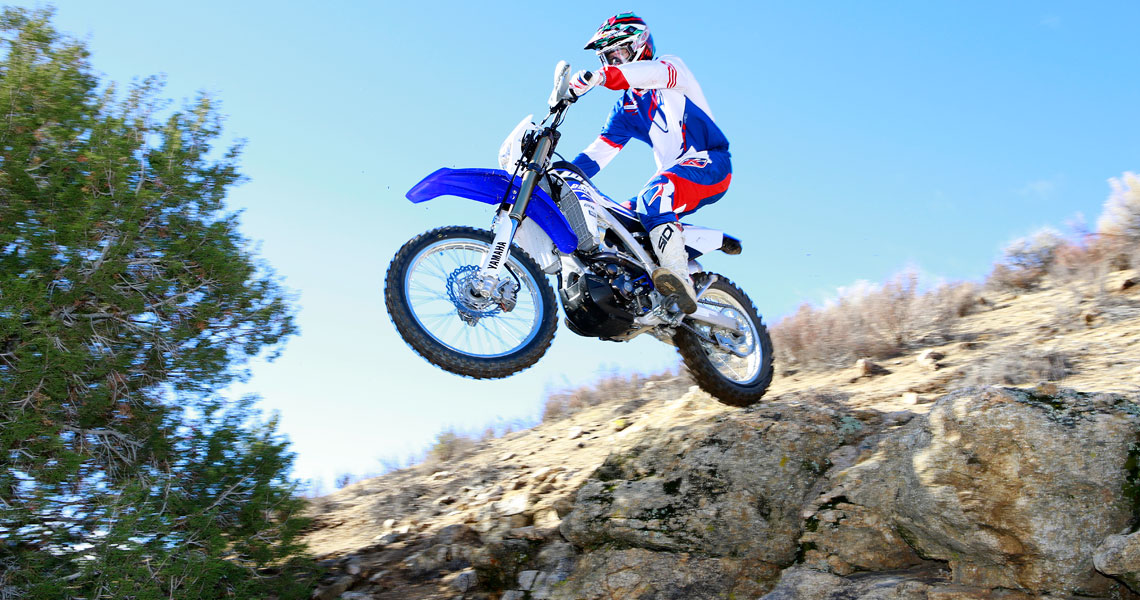
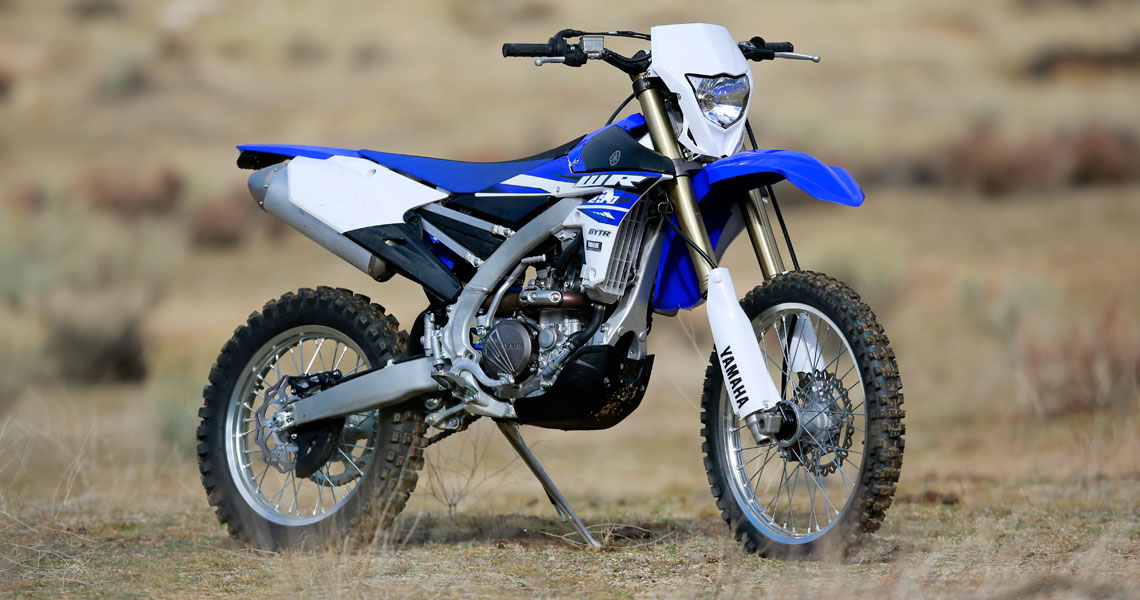
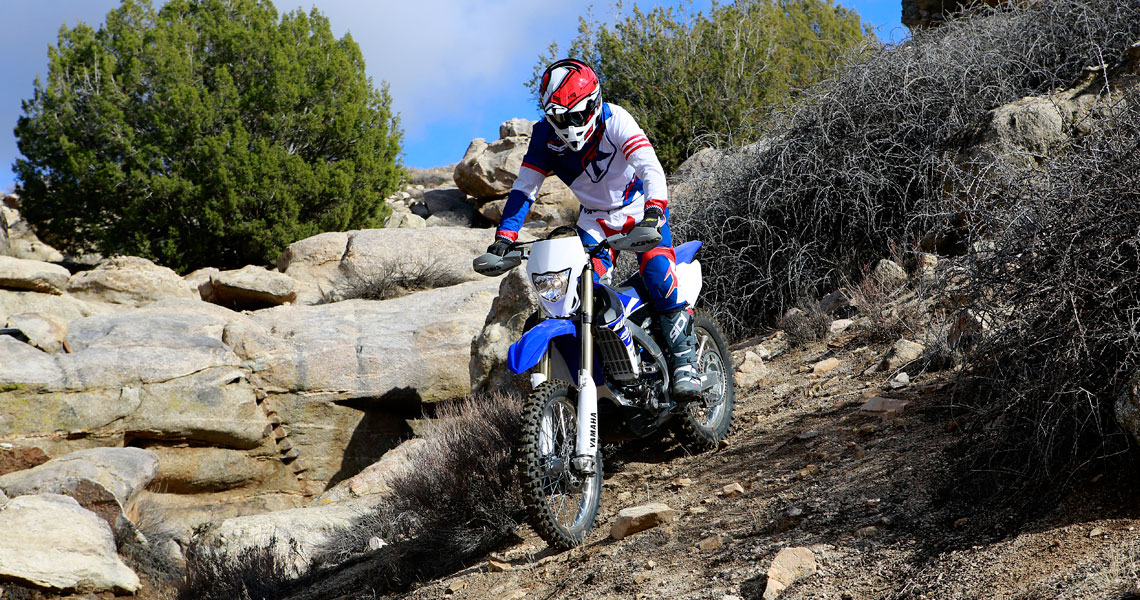
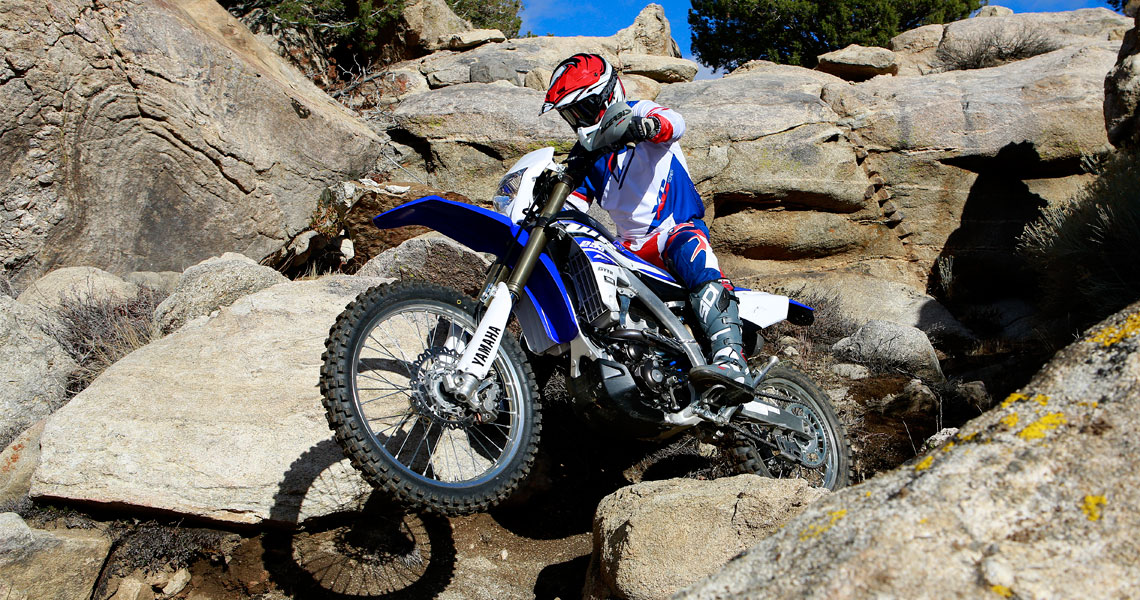

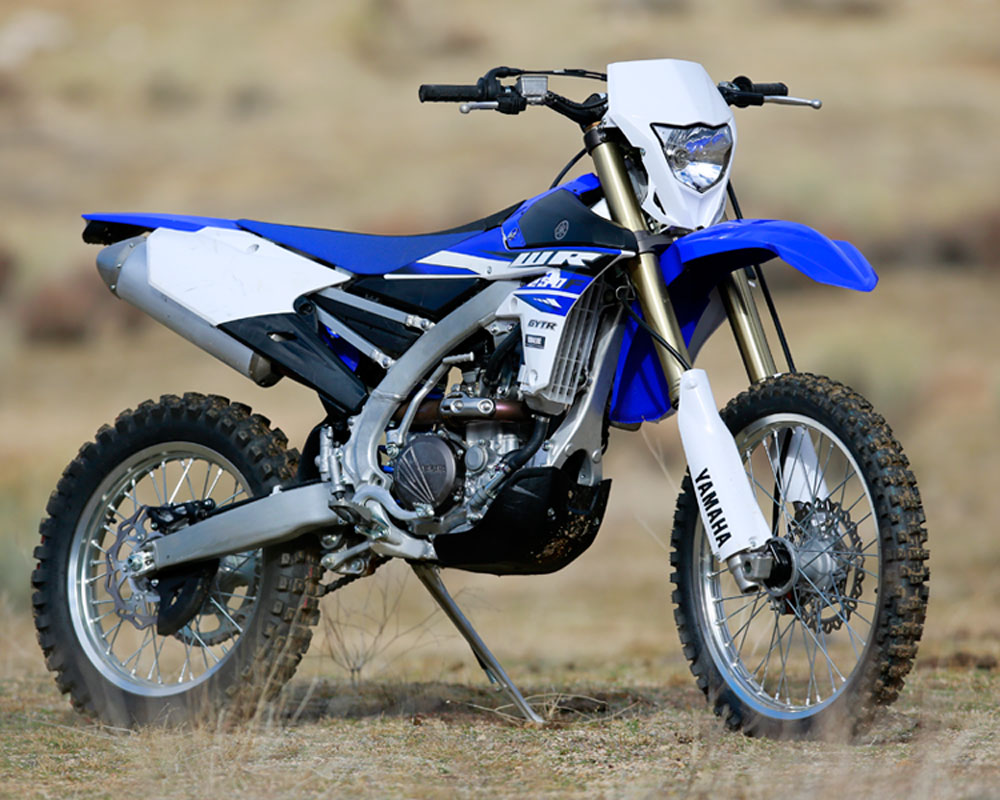
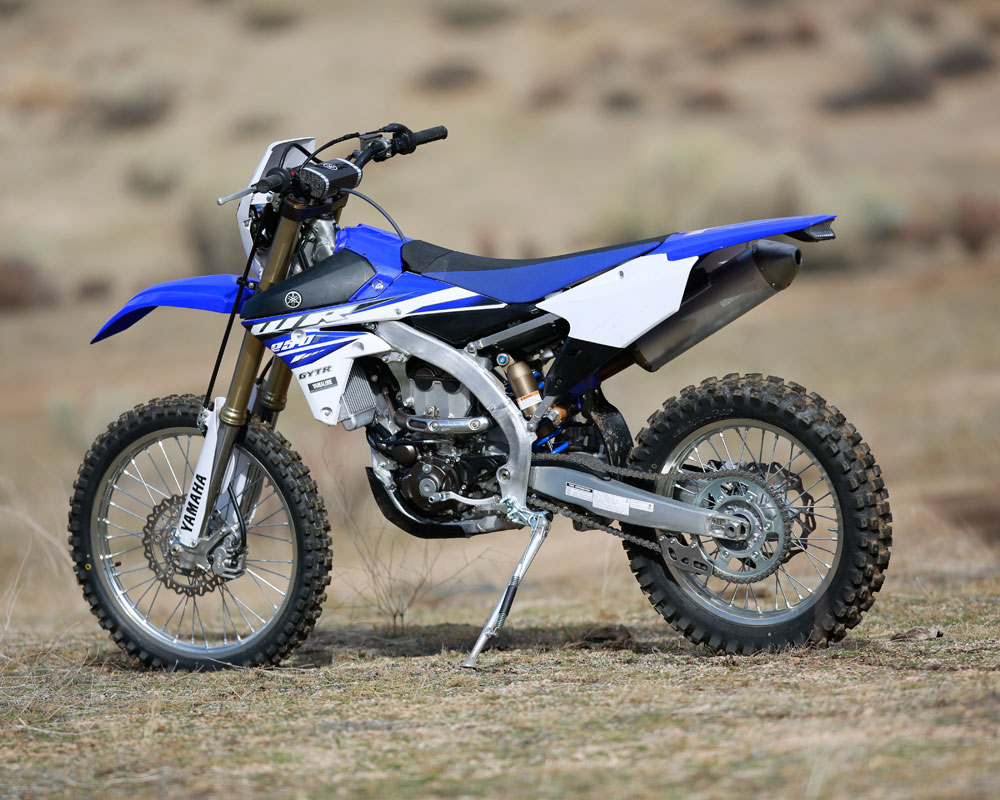
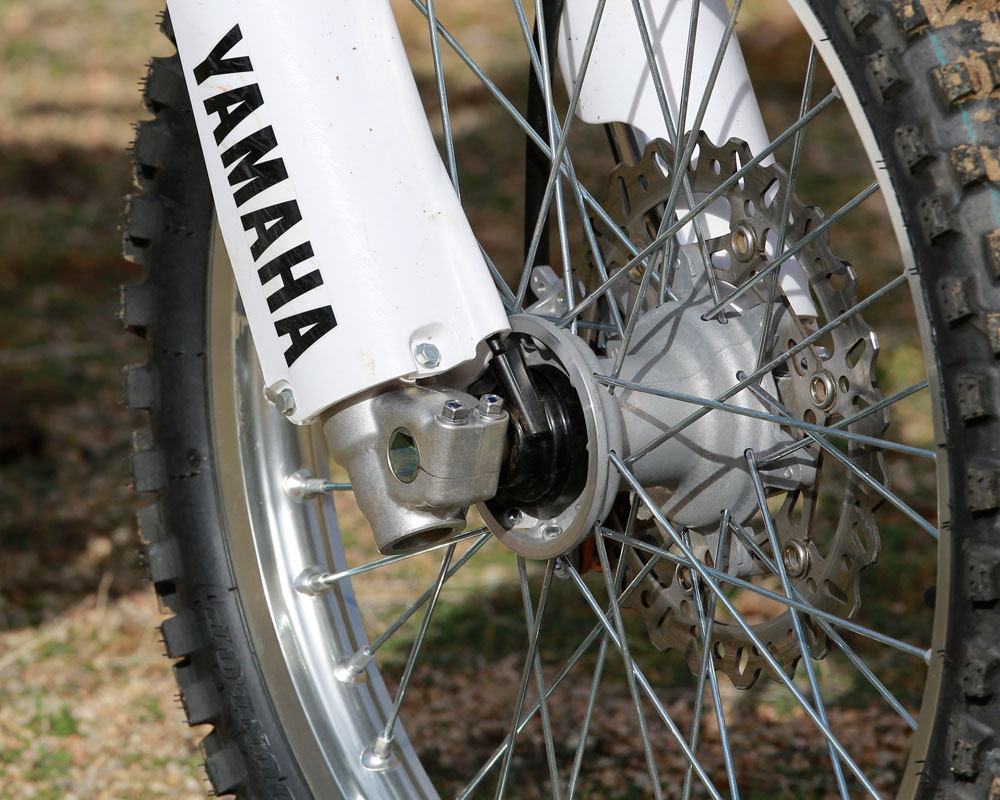
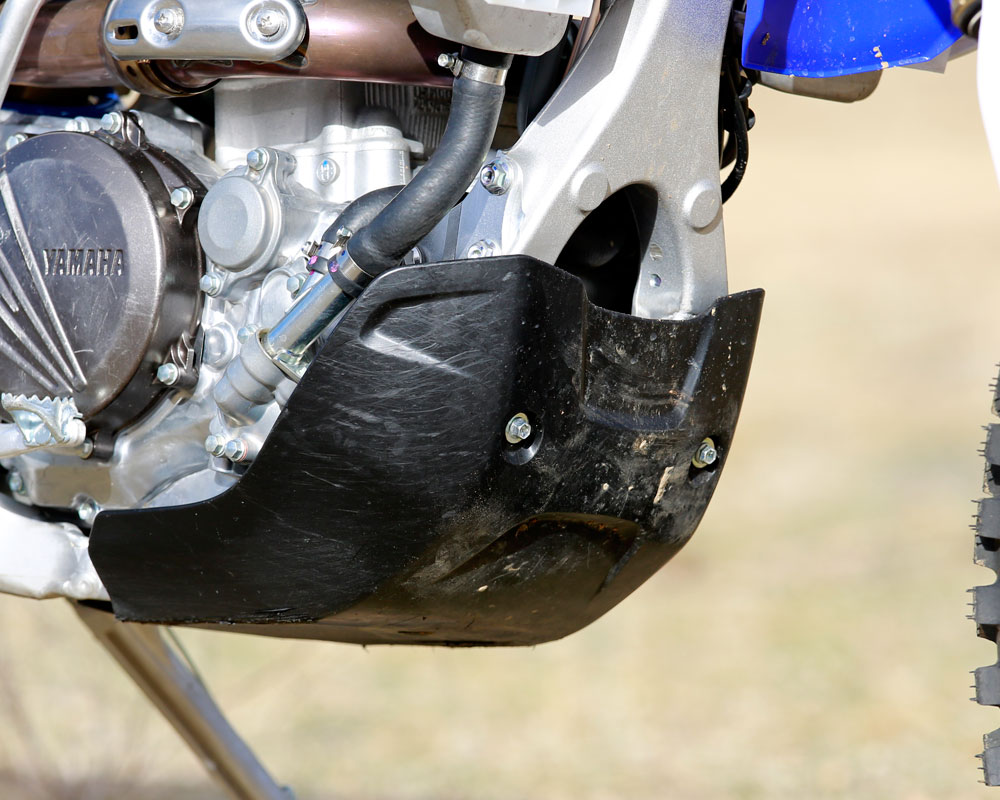
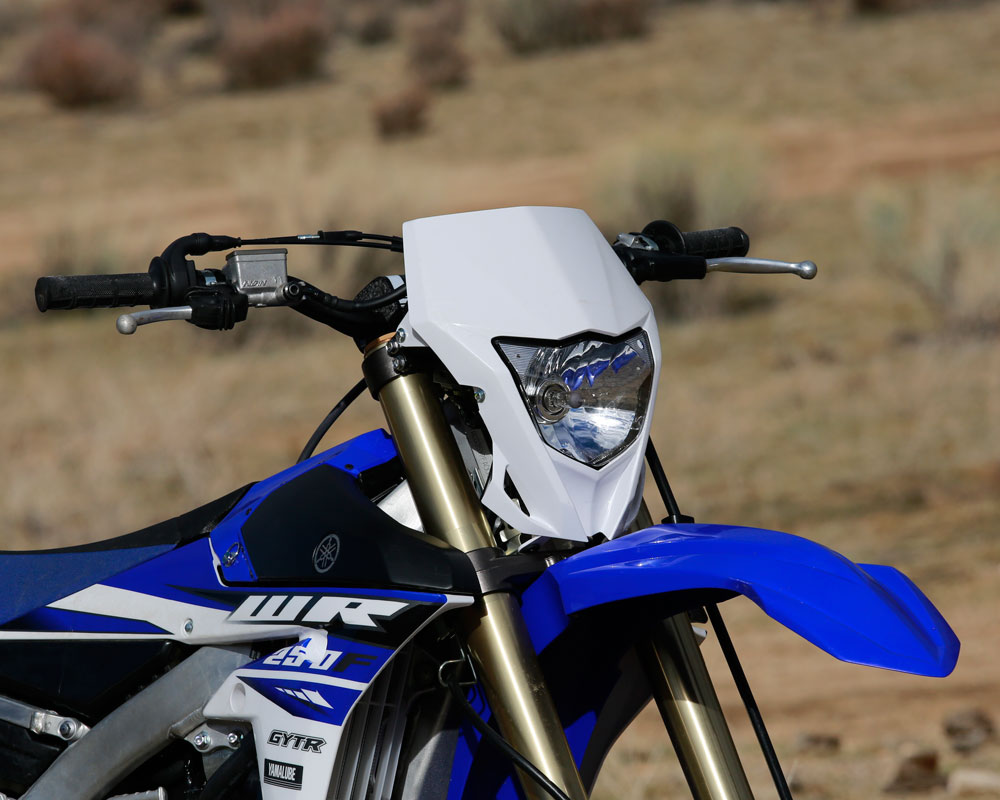
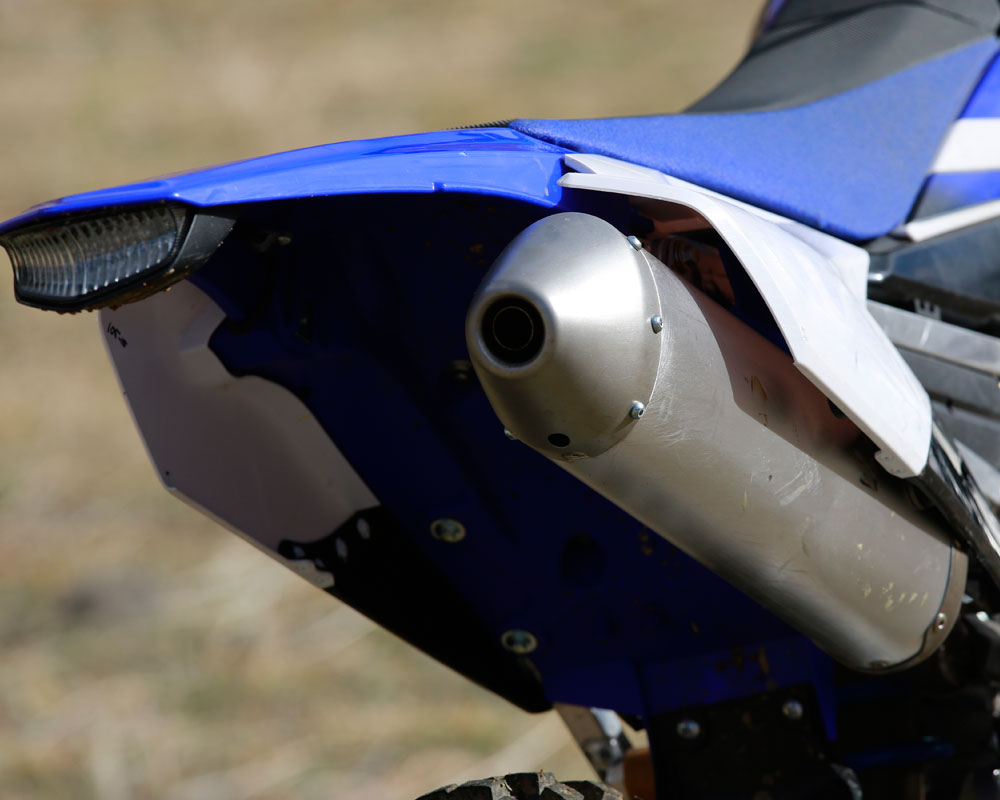

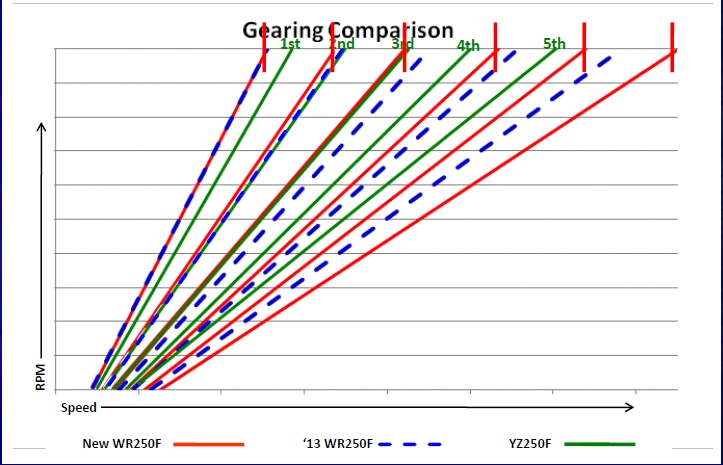
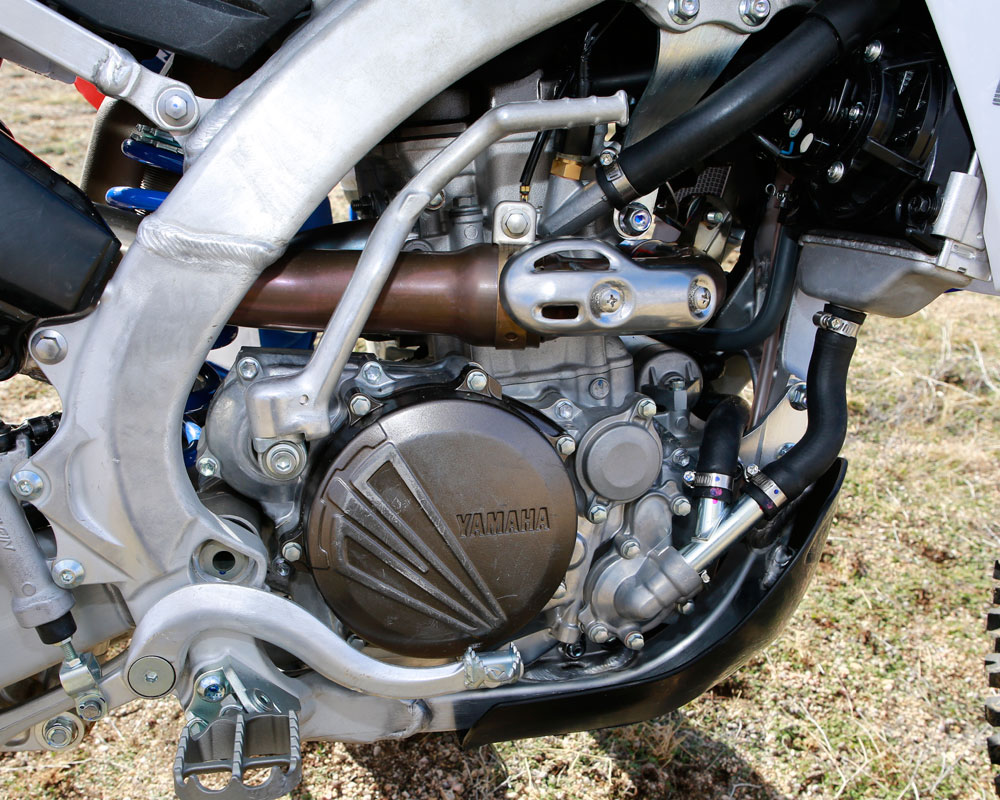
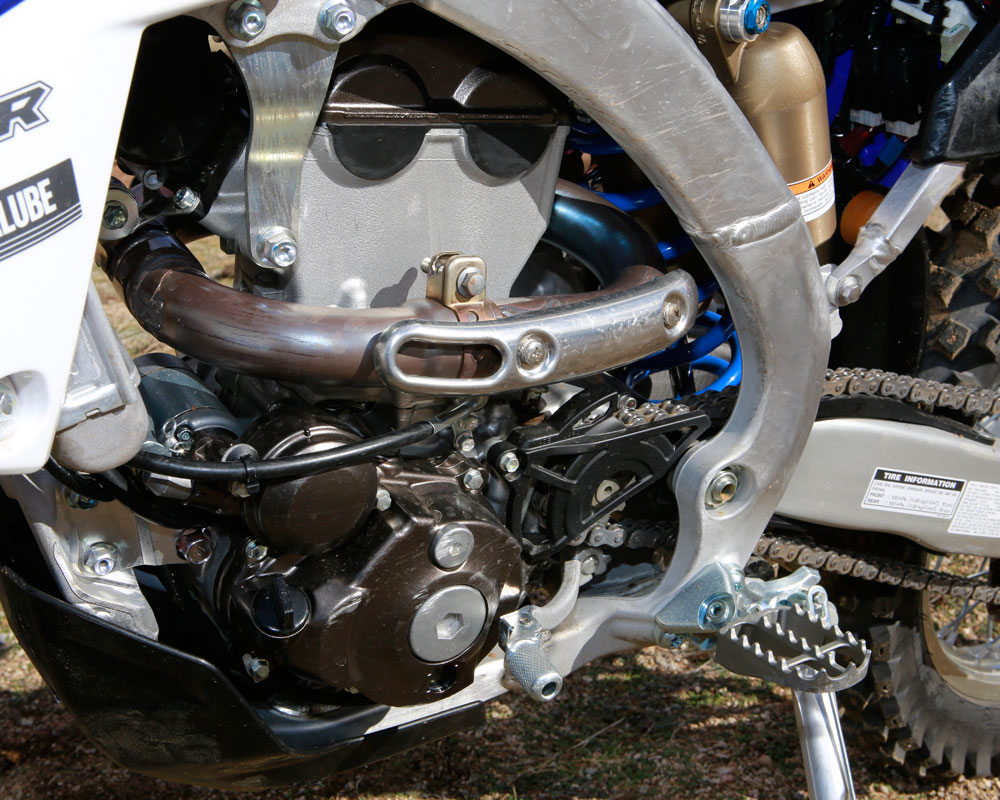



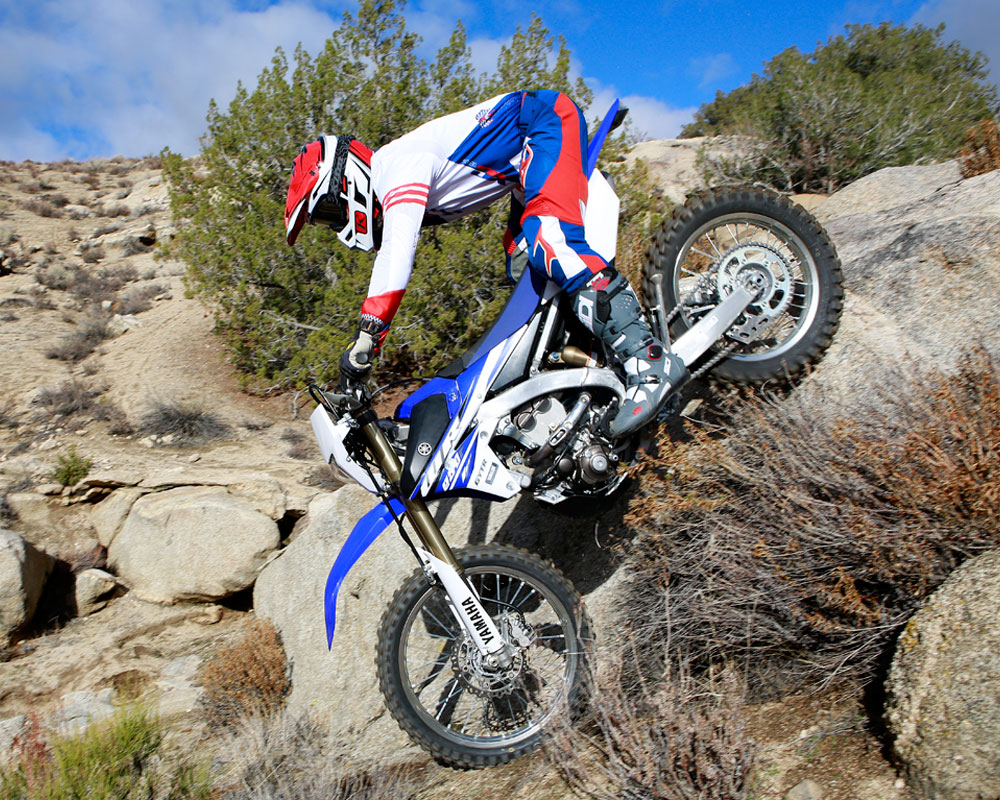


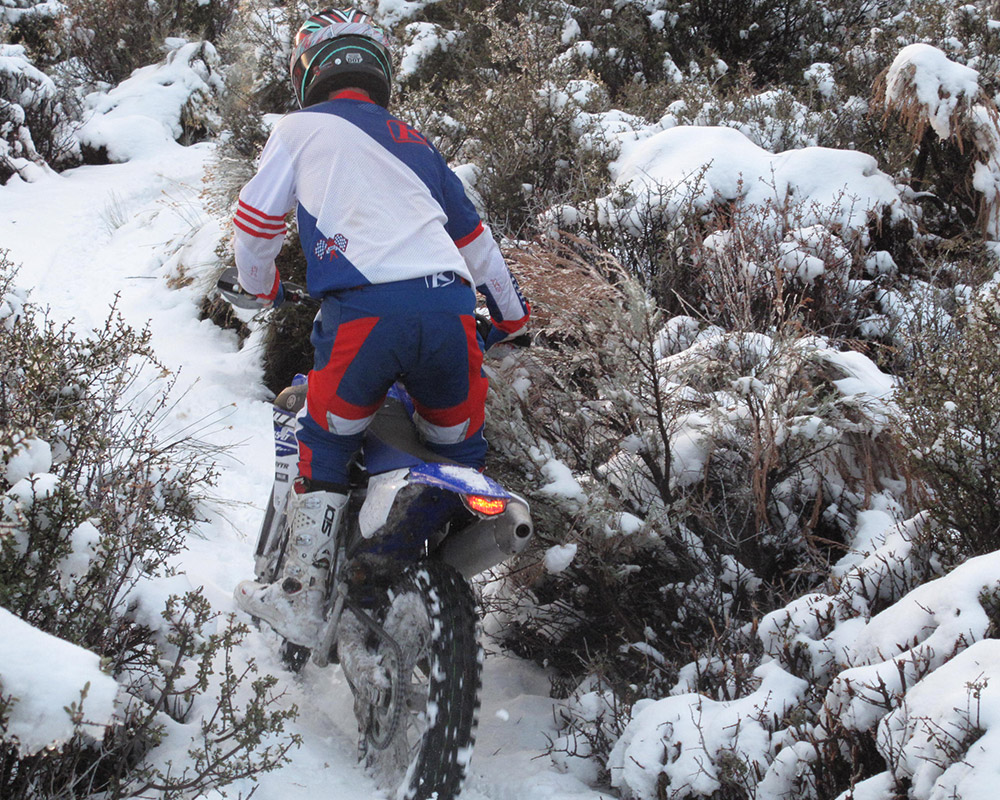
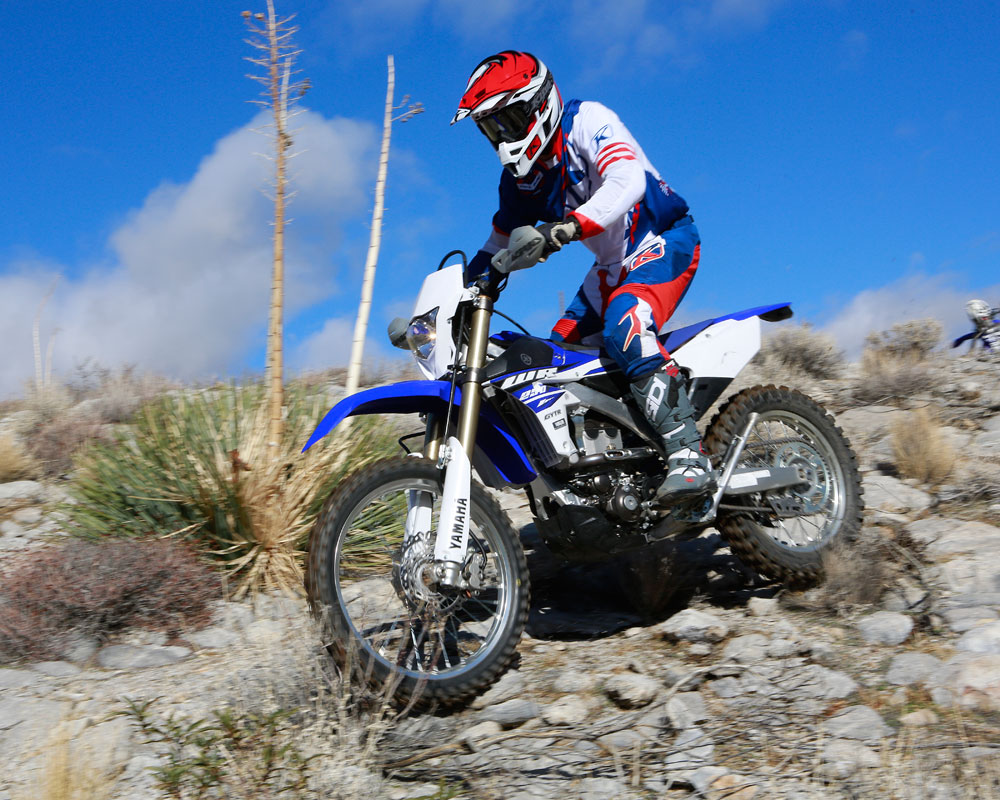
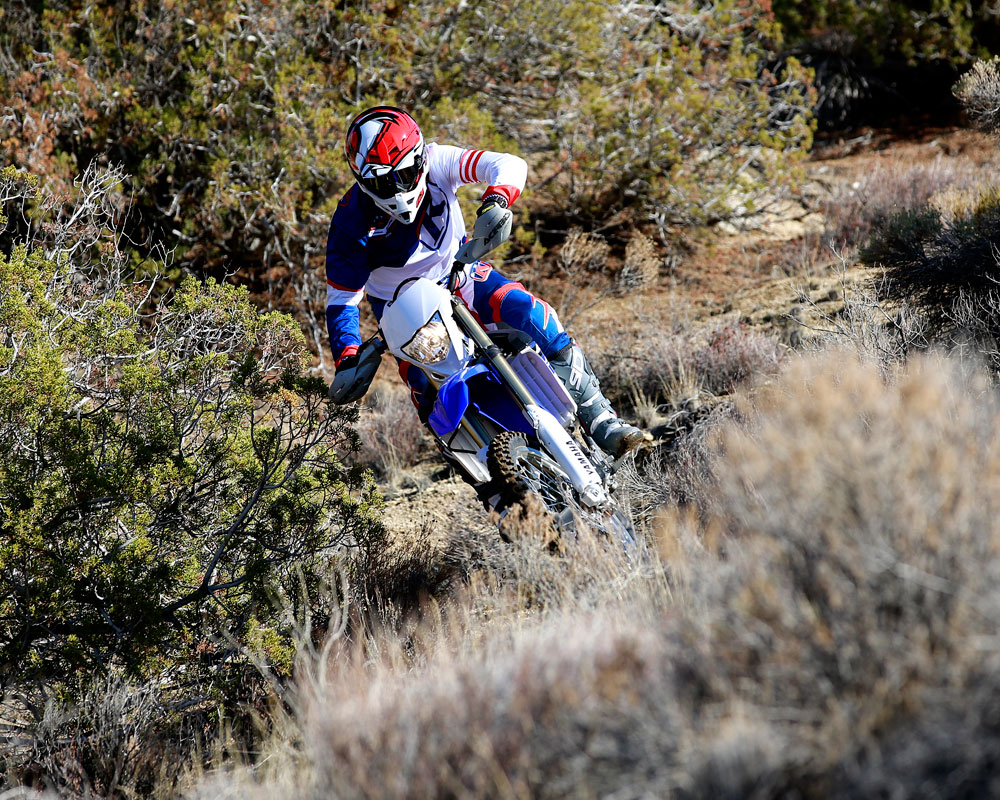
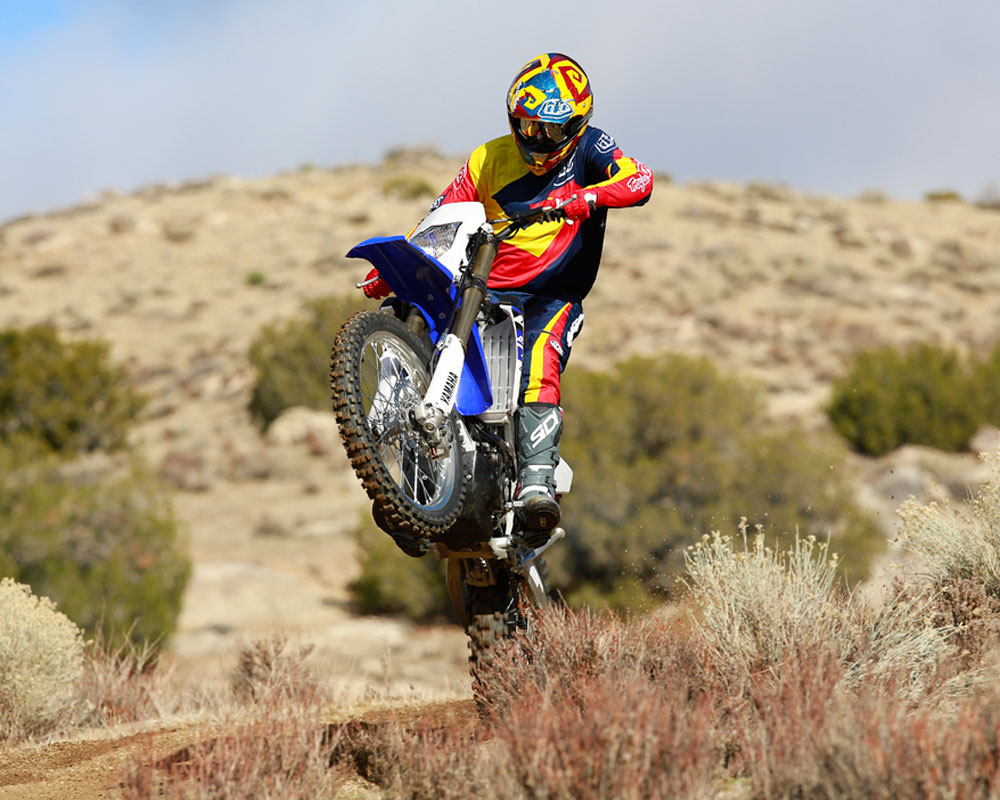
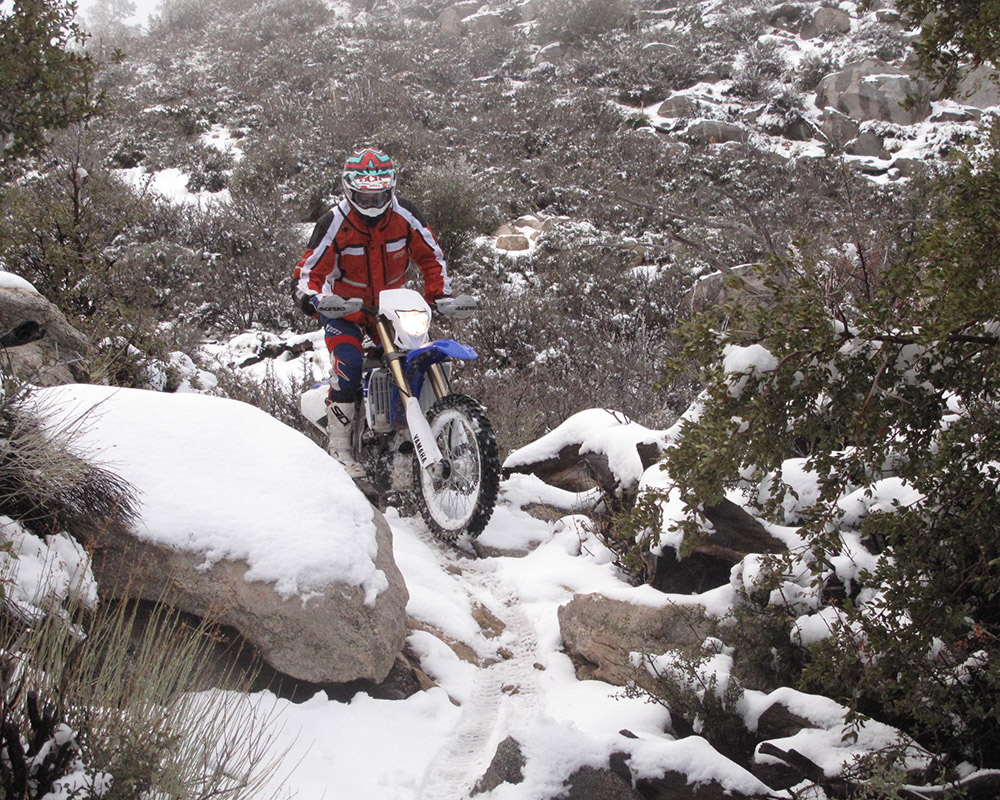
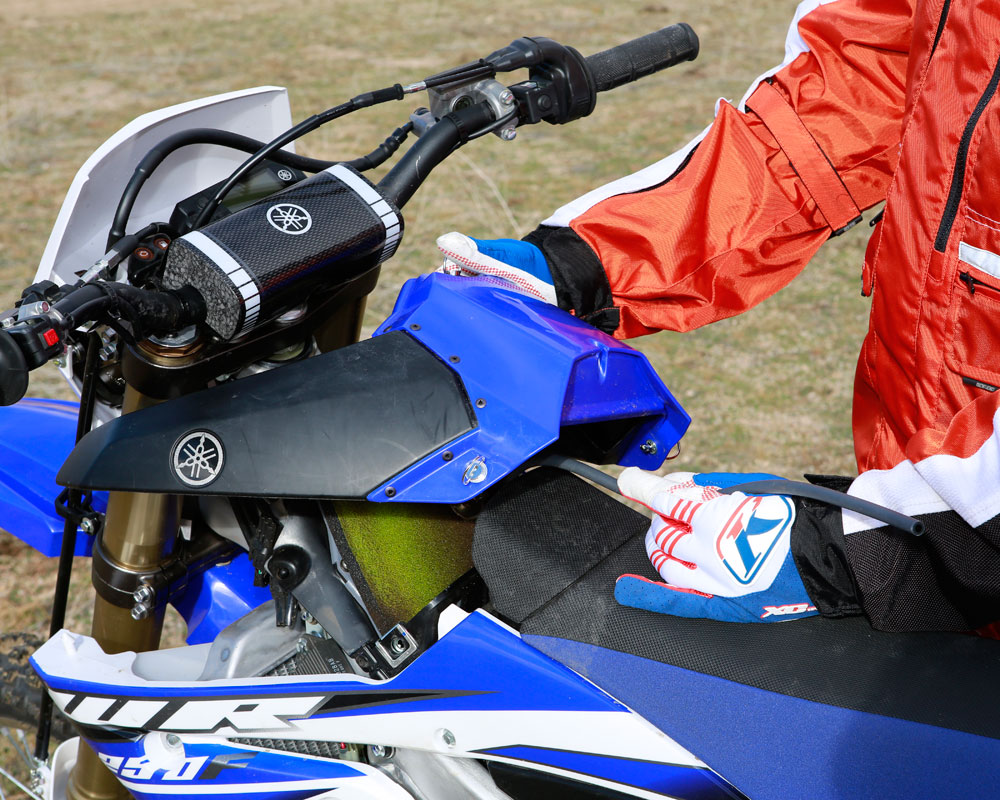
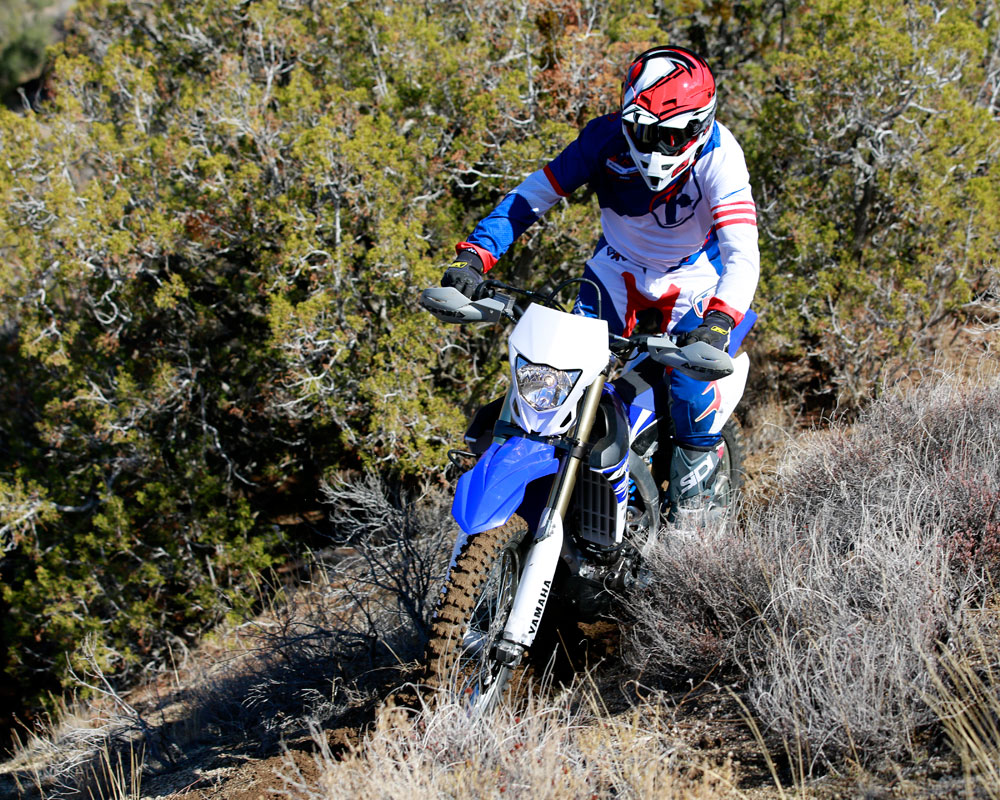


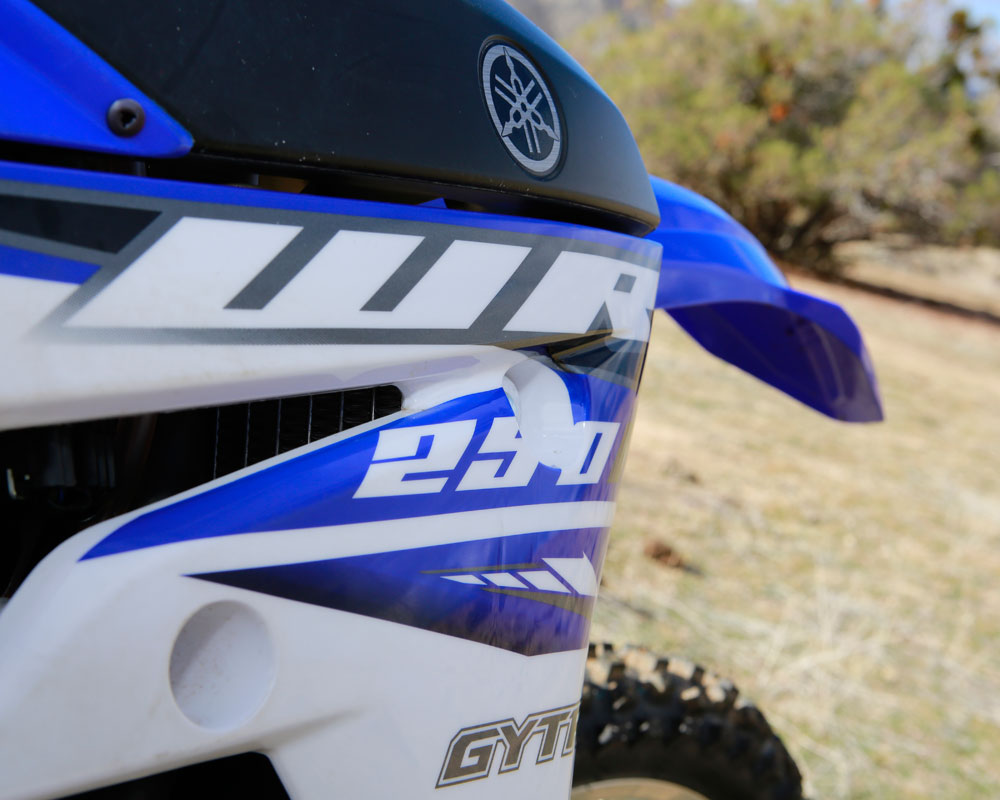
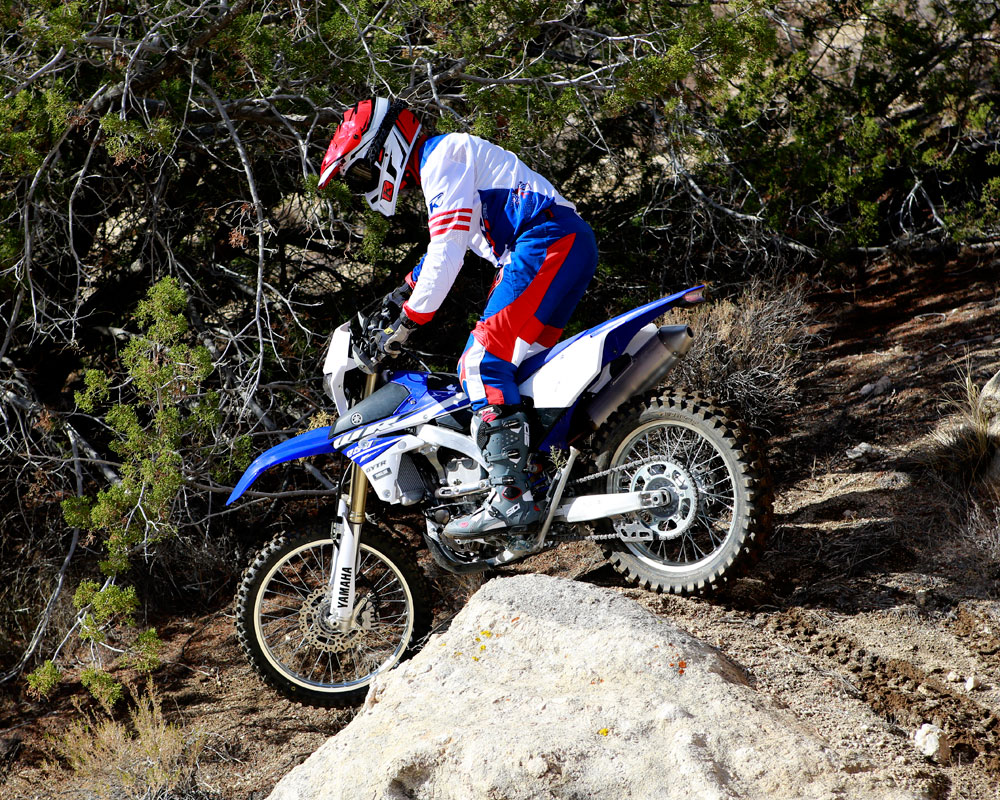
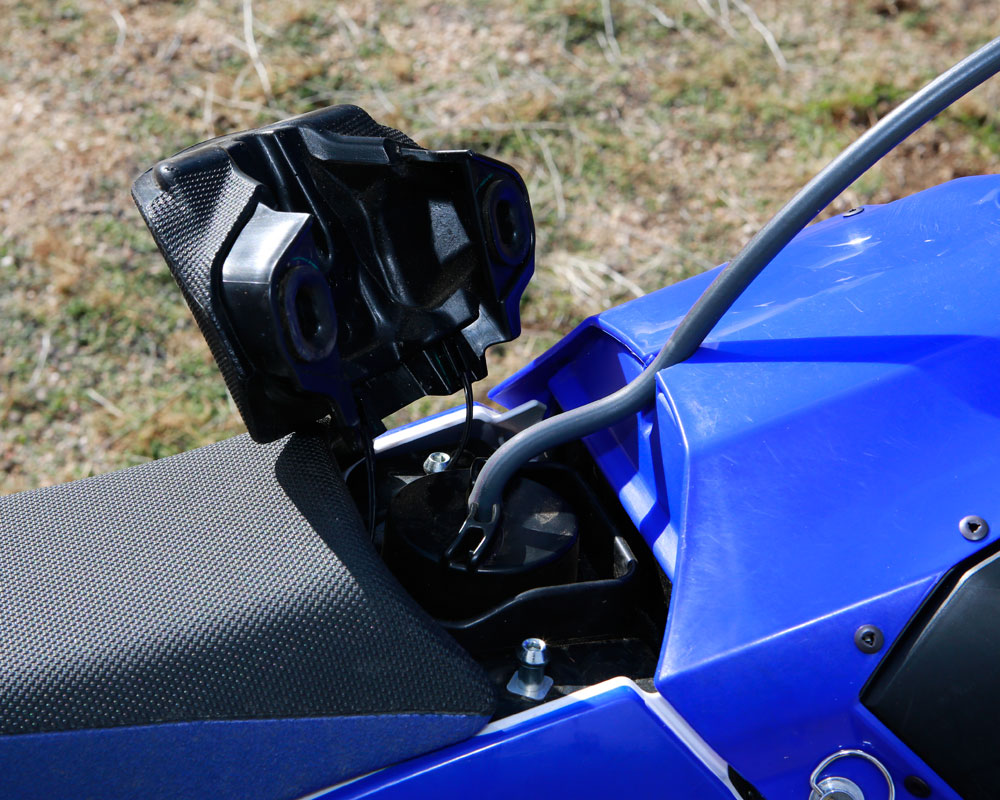
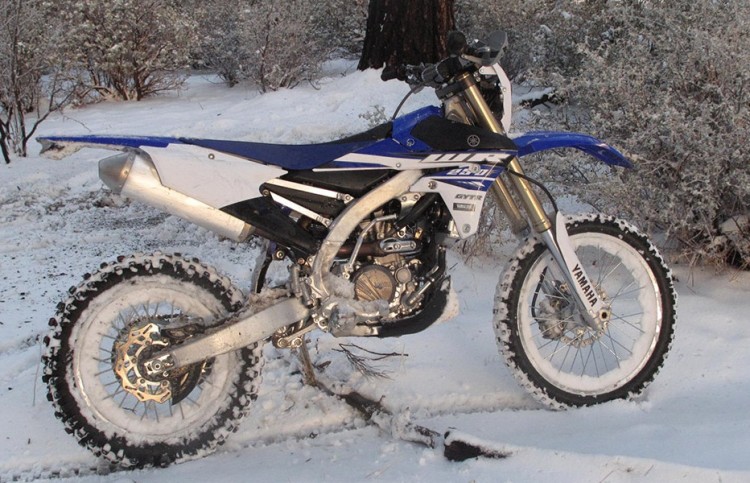
12 Responses to “2015 Yamaha WR250F”
Jimmy Lewis
If you have any 2015 Yamaha WR250F questions we failed to answer, let us know here and we’ll fix that for you.
El Isbani
This is what I wanted to –can this easily be set up for racing, looks like the answer is yes. So far I’d only read how it didn’t have “snap”, but some folks really like headlights and electronics.
Jimmy Lewis
With the GYTR Competition Kit it instantly becomes a race bike. We tried the YZFX ECU on ours and it gets snap. Switching out the muffler will add even more and we’re testing that as soon as we get the GYTR ECU in mid-January.
Tom Powder
Did you switch out the muffler yet and what were the results? Will it still pass the noise tests for trail riding?
Jimmy Lewis
We did throw on the FMF Q4 that we have been running on the YZ250FX and it ran exactly like the YZ250FX. It did not get any faster on top speed but it did gain a lot of pick-up and spunk when you turn the throttle. The sound still easily passes the 96 db static test but it is louder than the stock muffler which is more around 90 db.
w.t.hedrick
Is the ’15 WR $2500 better than the ’13?
Jimmy Lewis
It depends on the rider. You could not make the ’13 better in a high performance aspect for $2500. It will never feel as light and handle as responsive. If you are trail riding the bike, $2500 will pay for a lot of trips.
Dave A.
Excellent write-up! I know i’m a little late to this article but how hard do you think it would be to remove the lighting on this bike to save some weight plus to make the steering a little more free-flowing? Would it mess up the electronics to the point of no-return?
Jimmy Lewis
Not hard at all but the FX may be a better starting point if that is what you are looking at doing.
Jimmy Lewis
http://dirtbiketest.com/product-tests/yamaha-gytr-competition-kit-wr250f/
Here is the test of the Competition ECU Kit. It really helps the stumble (eliminates it really) and lets you get to business with the GYTR Power Tuner.
Jimmy Lewis
The tuner can mellow out either bike quite simply. Generally taking away ignition and adding fuel will tone the bikes down. The engines are actually the same from a power producing parts standpoint.
Paul
What a great test. Just found this site, what a gem. This bike is very appealing. Being a big-bore rider from decades past, this arm stretching days are over for me. I’m now longing for something with less power, and more fun; kinda like the ole XR100 we all used to ride, but dialed up to modern times. What would you think about running thus bike as a dual-sport? With a cush hub, could it handle the job? Or should I go with a WR250R?